Abstract
Seppäläinen, A. M., and Hernberg, S. (1972).Brit. J. industr. Med.,29, 443-449. Sensitive technique for detecting subclinical lead neuropathy. Subclinical neuropathy was studied in 39 male lead workers. Although 31 had a diagnosis of poisoning, all were without clinical signs of neurological impairment. A standard electromyogram revealed abnormalities (fibrillations and/or diminished number of motor units) in 24 men. The mean maximum conduction velocities (MCV) of the ulnar and median nerve were significantly lower in the group of lead workers as compared with an age-matched control group. Measurement of the conduction velocity of the slower fibres (CVSF) of the ulnar nerve proved to be a very sensitive indicator of lead damage. This measurement was done as a modification of Hopf's technique using a partial antidromic block. A combination of this variable and the distal latency of the median nerve discriminated lead workers from controls better than any other combinations. The findings are consistent with slight neuropathy. They further show that lead also affects certain portions of the fibres in the proximal part of the nerve.
The neurophysiological findings of the lead workers were collated to form a neurophysiological score (NF score). This score was used to compare the neurophysiological state with the degree of present lead effect, as judged from a rigid classification based on defined subjective symptoms and results of laboratory tests. There was poor agreement between the severity of lead effect and the NF score. No isolated laboratory test correlated with the neurophysiological findings.
From these results it appears that subclinical nerve damage can be detected in lead workers with no clinical neurological symptoms. Measurement of the CVSF is a particularly sensitive method for this purpose. The lack of correlation between the severity of subclinical nerve damage and the intensity of lead effect, as judged by commonly used criteria, suggests that nerve damage is produced independently of other manifestations of poisoning. This observation indicates the need for further studies on the value of present acceptable limits of lead exposure from the point of view of the nervous system.
Full text
PDF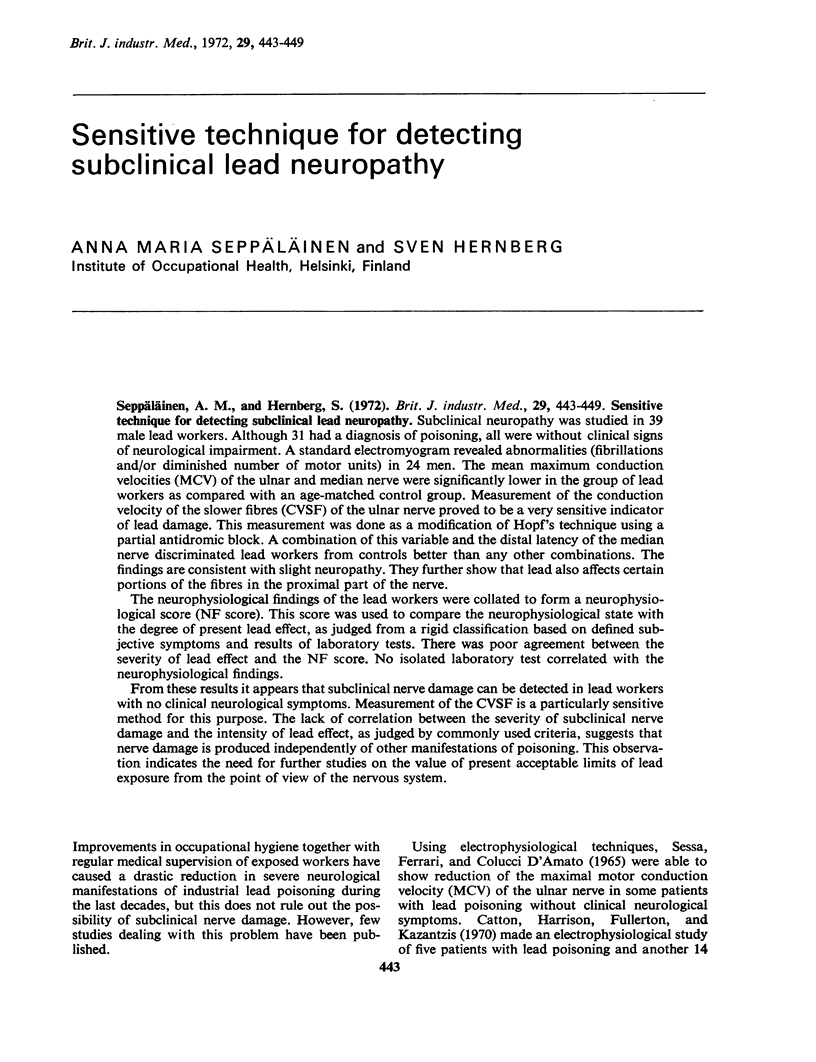
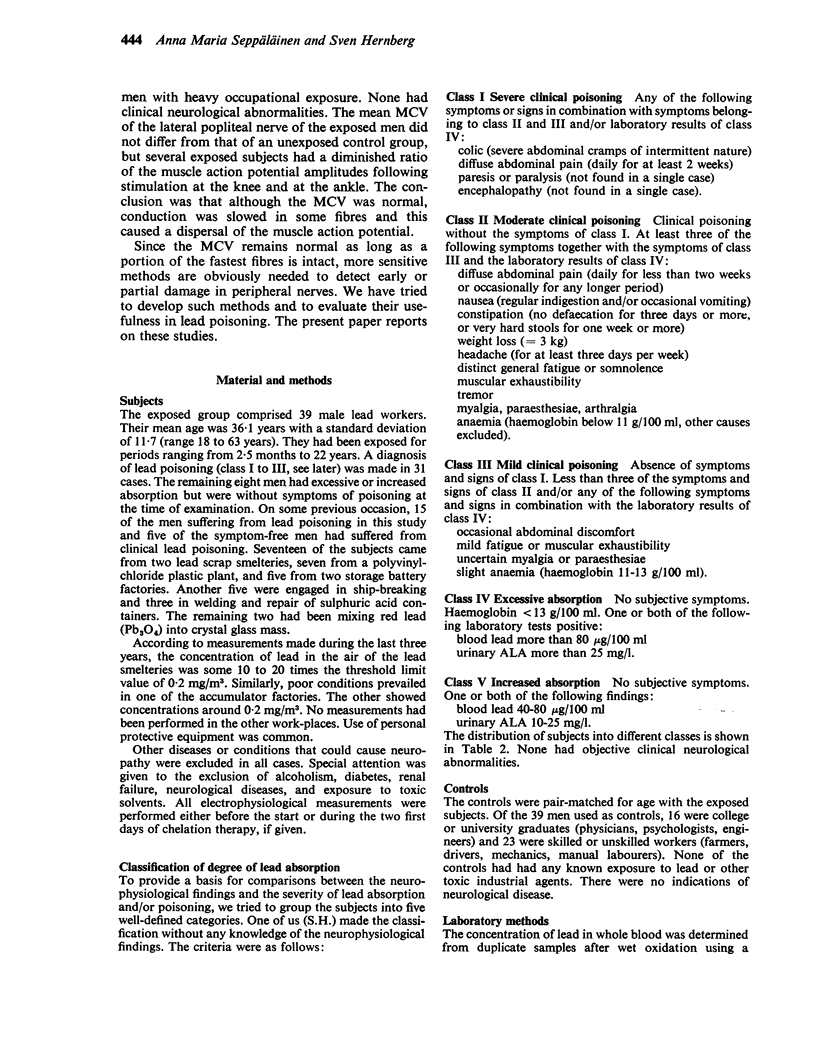
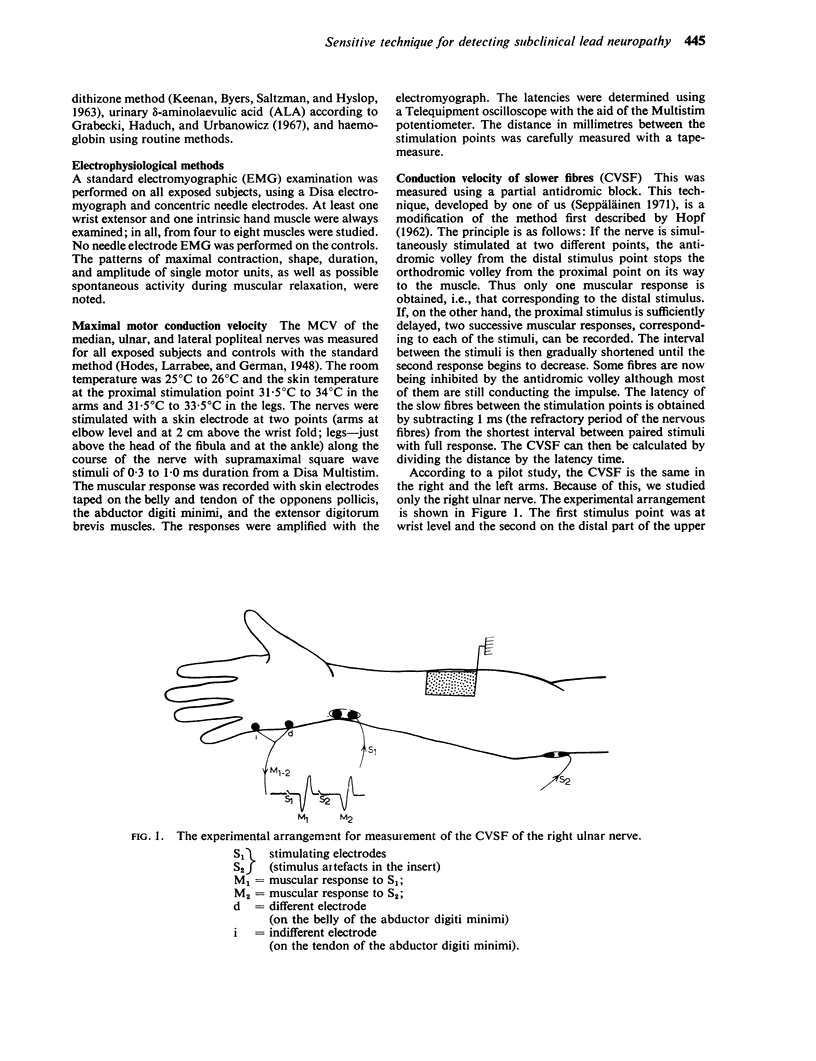
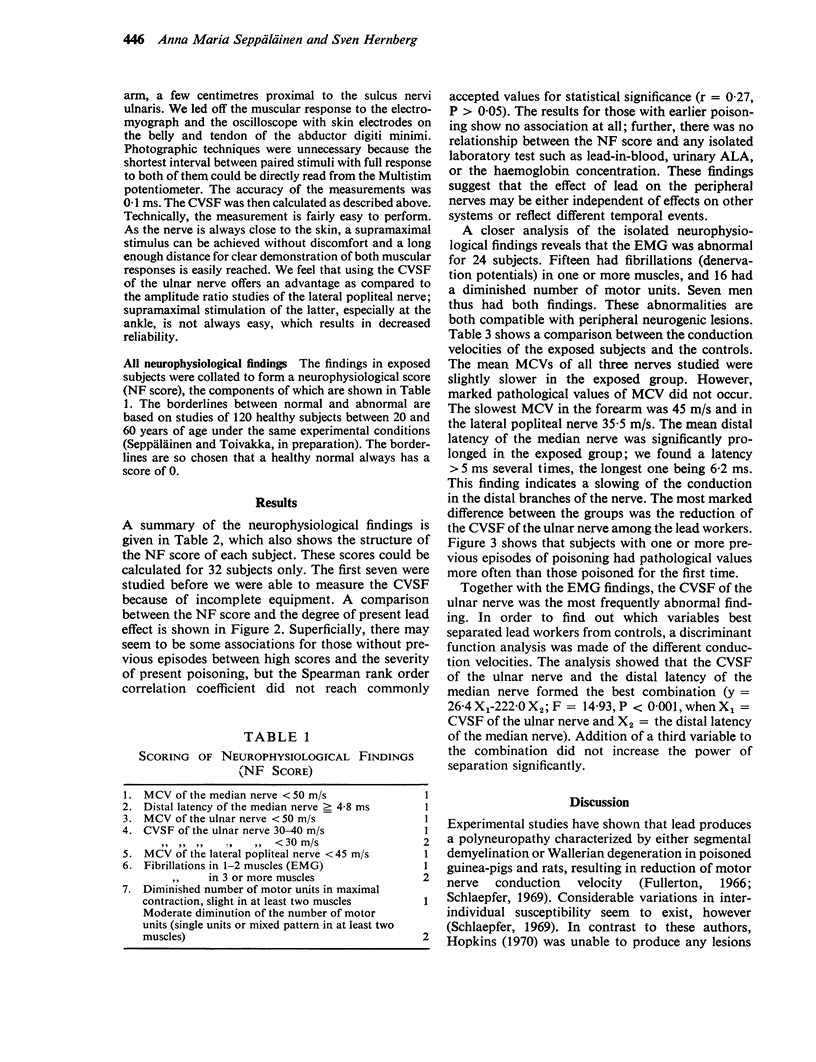
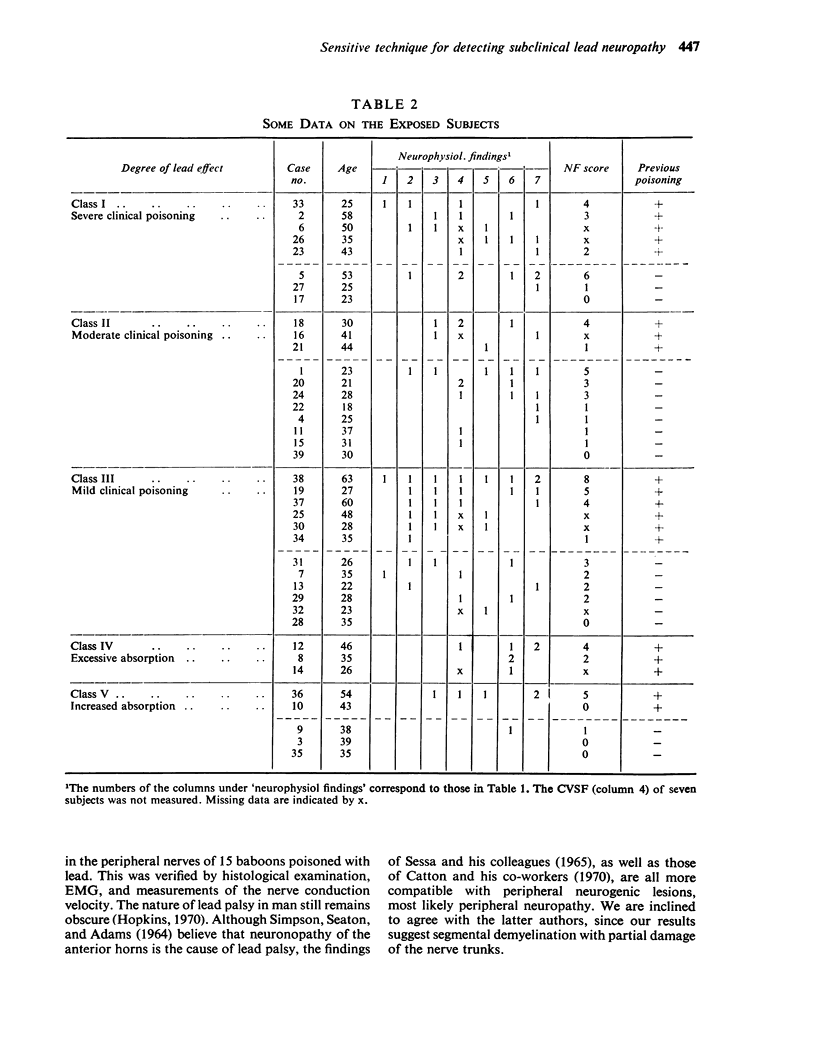
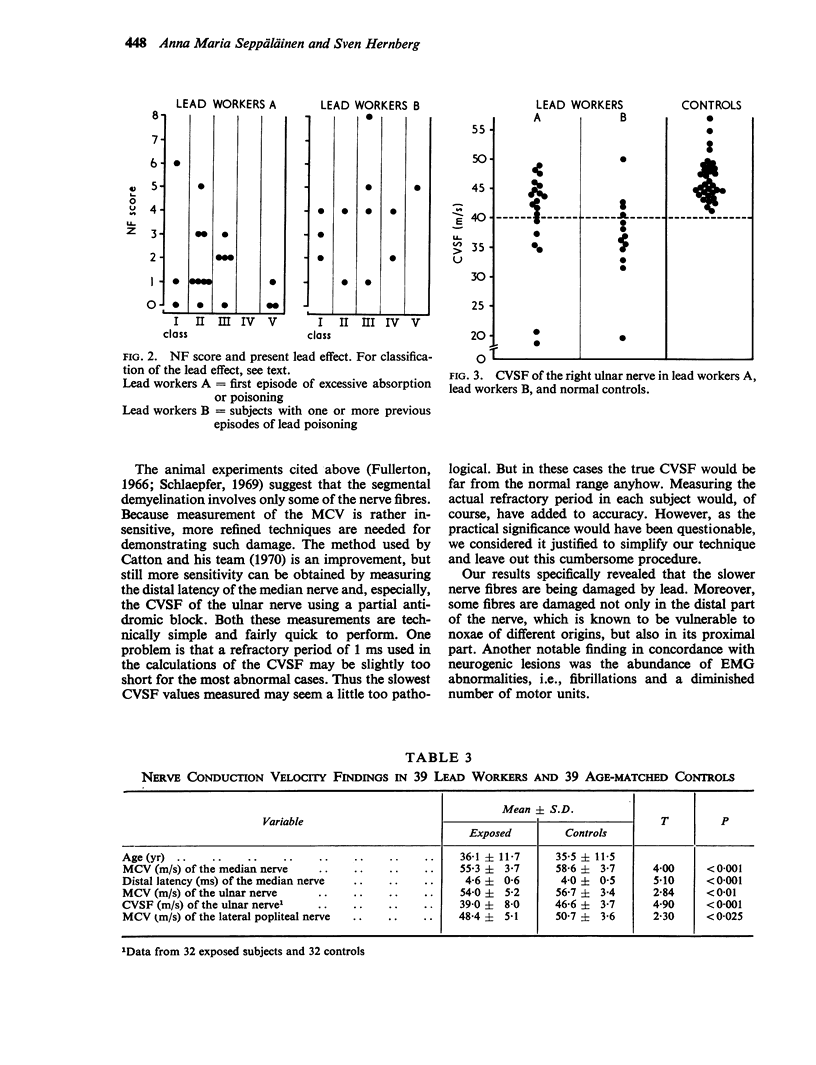
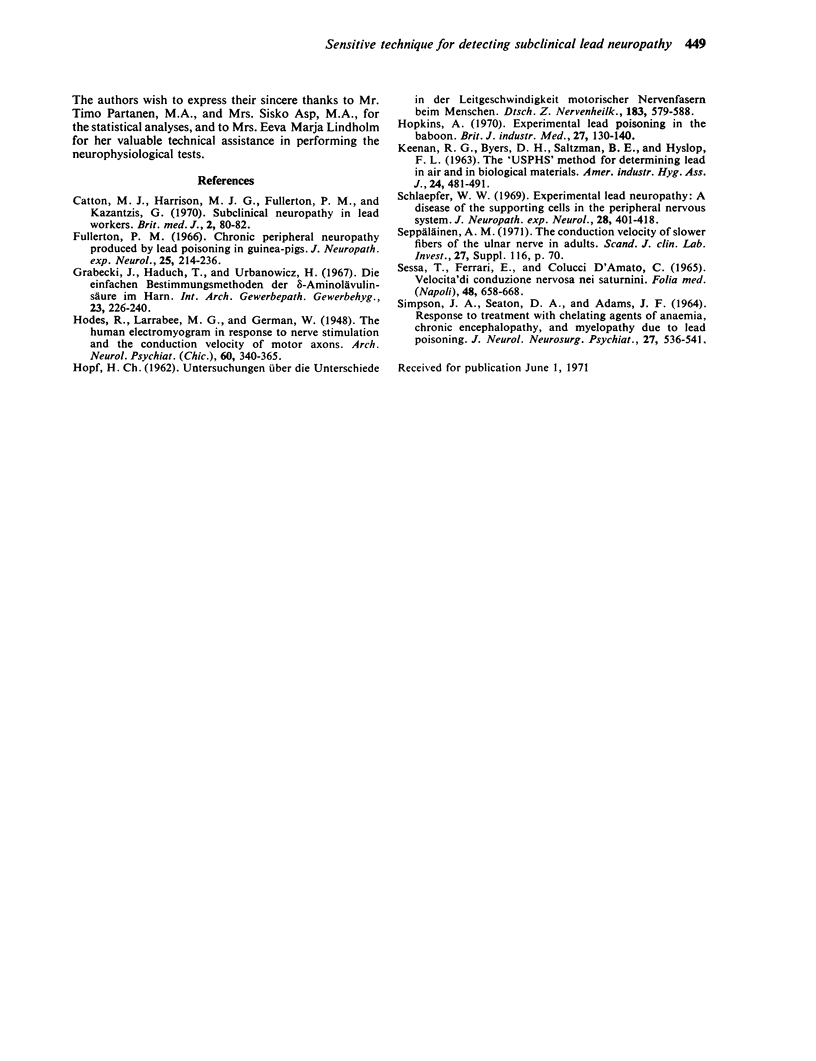
Selected References
These references are in PubMed. This may not be the complete list of references from this article.
- Catton M. J., Harrison M. J., Fullerton P. M., Kazantzis G. Subclinical neuropathy in lead workers. Br Med J. 1970 Apr 11;2(5701):80–82. doi: 10.1136/bmj.2.5701.80. [DOI] [PMC free article] [PubMed] [Google Scholar]
- Fullerton P. M. Chronic peripheral neuropathy produced by lead poisoning in guinea-pigs. J Neuropathol Exp Neurol. 1966 Apr;25(2):214–236. doi: 10.1097/00005072-196604000-00003. [DOI] [PubMed] [Google Scholar]
- Grabecki J., Haduch T., Urbanowicz H. Die einfachen Bestimmungsmethoden der delta-Aminolävulinsäure im Harn. Int Arch Arbeitsmed. 1967;23(3):226–240. [PubMed] [Google Scholar]
- Hopkins A. Experimental lead poisoning in the baboon. Br J Ind Med. 1970 Apr;27(2):130–140. doi: 10.1136/oem.27.2.130. [DOI] [PMC free article] [PubMed] [Google Scholar]
- KEENAN R. G., BYERS D. H., SALTZMAN B. E., HYSLOP F. L. THE "USPHS" METHOD FOR DETERMINING LEAD IN AIR AND IN BIOLOGICAL MATERIALS. Am Ind Hyg Assoc J. 1963 Sep-Oct;24:481–491. doi: 10.1080/00028896309343251. [DOI] [PubMed] [Google Scholar]
- SIMPSON J. A., SEATON D. A., ADAMS J. F. RESPONSE TO TREATMENT WITH CHELATING AGENTS OF ANAEMIA, CHRONIC ENCEPHALOPATHY, AND MYELOPATHY DUE TO LEAD POISONING. J Neurol Neurosurg Psychiatry. 1964 Dec;27:536–541. doi: 10.1136/jnnp.27.6.536. [DOI] [PMC free article] [PubMed] [Google Scholar]
- Schlaepfer W. W. Experimental lead neuropathy: a disease of the supporting cells in the peripheral nervous system. J Neuropathol Exp Neurol. 1969 Jul;28(3):401–418. [PubMed] [Google Scholar]


